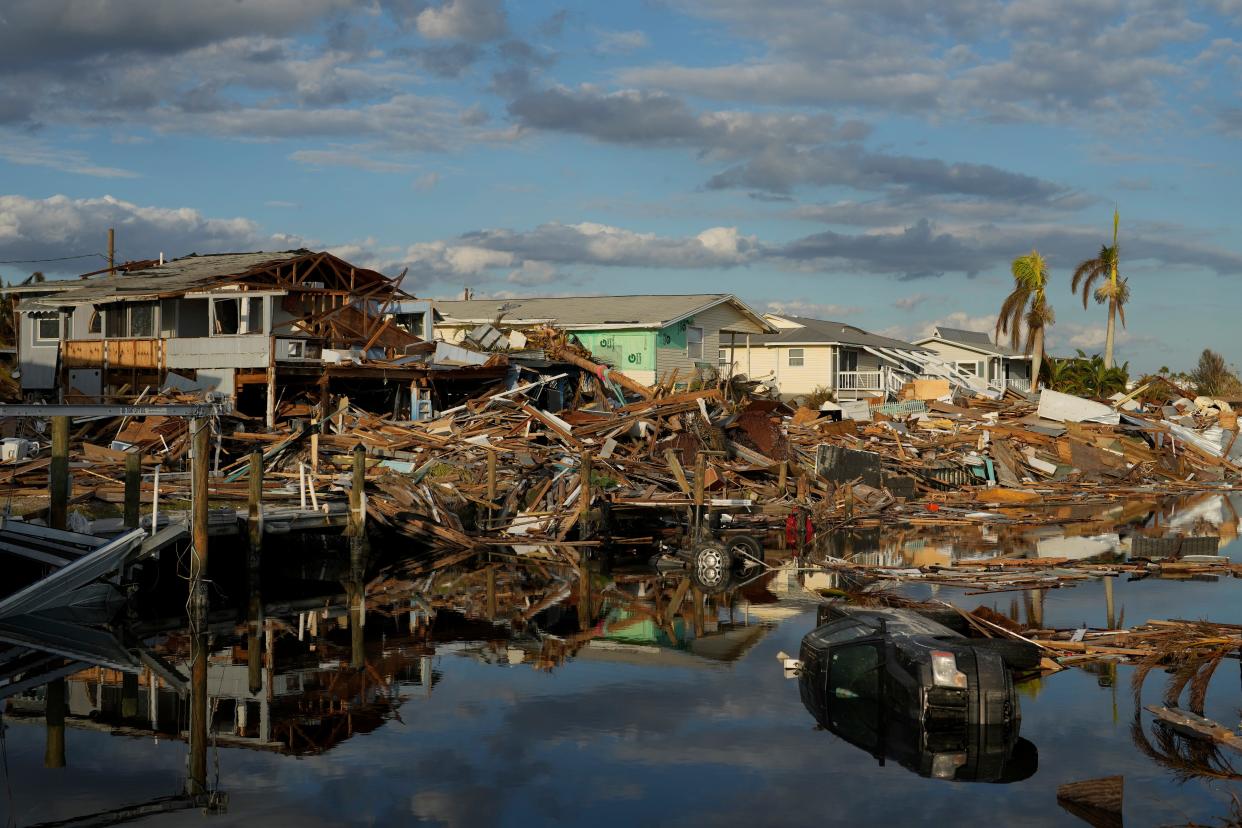Buyers beware: Cars flooded by Hurricane Ian could land on used car market

AAA Northeast is warning consumers that cars flooded by Hurricane Ian could find their way into the region's used-car market.
Carfax Inc., which produces vehicle history reports, has found that nearly 50% of flood-damaged totaled vehicles return to the market as used cars, AAA says.
"History has shown us that less than honest dealers, wholesalers and even private party sellers will be offering these previously flooded cars to unsuspecting buyers," AAA said.
More: 'The resiliency of these people is inspiring': RI Red Cross helping in Ian's wake
Carfax estimates, even before the impact of Ian, there were 400,000 waterlogged cars in the United States, including 900 in Rhode Island.
With a shortage of new and used cars, the hurricane and market might have created a perfect storm for unscrupulous sellers to prey on vulnerable buyers.
"The real danger is that these cars may look fine and run well for a while, but sooner rather than later major problems are likely to occur. Flooded cars literally rot from the inside out and the damage is often difficult for untrained eyes to detect," Carfax spokesman Chris Basso said previously about water-damaged cars.
The Better Business Bureau says, "By the time the issues become apparent, the seller is gone, and the new owner is left with an unreliable vehicle, along with no recourse against the seller."
Here's how flood-damaged cars get back on the market, according to AAA.
"Insurance companies often declare flood-damaged vehicles as total losses, and those cars are then sold to salvage companies," AAA says. "However, rather than being dismantled for parts, some of these vehicles are purchased by individuals who restore them to some degree of working order."
At that point, the Better Business Bureau says, "Flooded cars are often transported well beyond the original region where the flood or major storm occurred to locations where consumers may be less aware of the damage and what warning signs to look for."
Rhode Island law protects consumers who've unknowingly purchased a water-damaged car, according to Brian Hodge, a spokesman for the Rhode Island Attorney General's Office.
"Auto dealers may sell 'salvaged' cars, including cars that were destroyed in flood but were rebuilt. However, by law, dealers must disclose that these cars were 'salvaged’ or 'restored' the first time they are sold after the disaster," Hodge said via email. "If the dealer fails to disclose this information, a consumer should contact our office or the DMV’s Dealer Licensing and Registration Board."
He added, "It is important to note that this regulation does not apply to dealers located in other states, which may have different requirements related to salvaged vehicles."
Signs of flood damage
Here are some signs that indicate a car has been water-damaged, compiled from AAA, Carfax and the Better Business Bureau:
Damp or musty odors.
Carpet or upholstery that has been replaced or recently shampooed. AAA says pull back the carpet at different areas and look for mud, dirt, rust or water stains.
Mud and dirt on the underside of the dashboard, an area that's difficult to clean.
Brittle wires under the dashboard
Fog or moisture beads in the interior lights, exterior lights or instrument panel
Rust on the underside of the vehicle. Corrosion is uncommon in newer vehicles and those that are owned and operated in warmer climates, AAA says.
Rust, mud, dirt or discoloration in body seams and small out-of-the-way crevices on the doors, under the hood and inside the trunk.
Check under the hood.
The Better Business Bureau says consumers should ask to see the car title. "Check the date and place of transfer verifying where the car came from. If the title is stamped "salvage" or arrived from a recently flood-damaged state, ask questions."
AAA Northeast advises used car shoppers to get a Carfax vehicle history report before buying. The report could reveal if the car has been in a flood or been issued a salvage title, AAA says.
Carfax has a free flood check tool where buyers or car owners can enter the car's vehicle identification number to learn if the car was reported as flooded.
The Better Business Bureau also notes that the National Insurance Crime Bureau’s (NICB) free database lists flood damage and other information, but the reports are only helpful is the car was insured.
Consumers can also check the car's history via the National Motor Vehicle Title Information System, according to the attorney general's office. It "is the only publicly available system in the country that requires all insurance carriers, auto recyclers, junk and salvage yards, and states to report vehicle history information, according to the attorney general's office. "A vehicle history should tell you if the car has been in a flood region or was issued a flooded or salvaged title."
AAA and others also advise buyers to get a pre-purchase inspection by a trusted mechanic. To locate a AAA approved auto repair facility, visit AAA.com/autorepair.
jperry@providencejournal.com
(401) 277-7614
On Twitter: @jgregoryperry
Be the first to know.
Sign up for our breaking news alerts
This article originally appeared on The Providence Journal: Cars flooded by Hurricane Ian could land on used car market warns AAA

